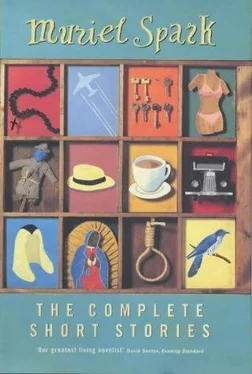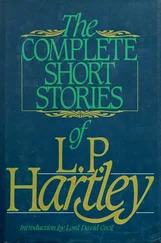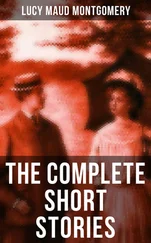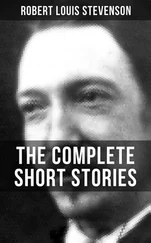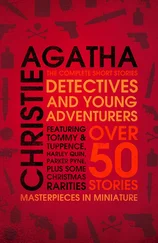Next, Mary-Ann, Nancy, Maud and my great grandmother Sarah Rowbottom, who lived to 105, and here shows that possibility already at sixty-five. They are wearing their best frocks, tight corseted waists, prominent busts, as breasts were called, lots of rows of lace and always a locket hanging round their neck with God knows whose photos, whose locks of hair, enclosed in those small breast-warmed cases. Mary-Ann, who was the first to get married, wore a dark brooch. Their hair was done up, all in order. Lower middle class of those days, aspiring. They were corn dealers and managed quite well.
They lie in Vicarage Road churchyard, Watford, every one, they are marked by two stones: Deeply Mourned.
I explained them one by one to Joe, and added what I knew of family lore.
Next came my mother, born 111 years back, dead these twenty-seven years. And a cousin whose name I can’t recall but who, I know, was very ambitious. Alas, she never achieved her ambition, which was to own a Rolls Royce with a chauffeur to drive her from shop to shop, as was possible in those days. This cousin — what was her name? — oh, well, she became a Mrs Henderson, wife of an accountant, and got as far as Paris on the Golden Arrow one year. No Rolls, no chauffeur. But Mrs Henderson always said that she wanted one.
Now where was that other photo of Mrs Henderson, one that I remembered well because it was so uncharacteristically informal, where she was standing over her sewing machine? She was slightly bent, in profile, slim-waisted and handsome. Someone with a camera had caught her examining the bobbin of her machine, her beloved treadle-operated Singer. Something was wrong with the machine and Mrs Henderson —what was her name? — was looking intently at it. An enchanting photograph. It was gone. Someone had removed it.
The same with a few others I now remembered. My paternal grandmother from a Jewish family in Lithuania, very blonde and Polish looking, her hair piled and plaited, not at all Jewish to look at, unlike my grandfather with his lovely smile inside his beard; he was so like my father, who, however, was always clean shaven. My grandmother Henrietta’s beautiful photograph was missing. I remembered her so well in the photograph, never having known her in the flesh. I remember the large space between the eyes which I have inherited. Blue eyes. Where has she gone?
I thought of all the people who had slept in this room and others who had been within easy access of it. Some dozens of friends over the years. Who would have an interest in those meaningless photographs? Sometimes, because I am a writer, journalists have been known to snaffle a photograph of myself without permission, but these old Victorian and Edwardian pictures, without even artistic merit …?
I concentrated on the bundle of photographs that were left to me. They weren’t a bad selection, enough to illustrate my long-ago origins and in some cases my memories. I gave them to Joe and put away the rest. I had other things to think of.
Damian de Dogherty — you mention Damian de Dogherty — Oh, my God, I haven’t thought of him for five years. Before that he saw to it that I thought of him every month, if not every day. I lived in Paris at the time.
According to his spin, or rather, one of his spins, the family were Huguenots originating from Ireland, taking refuge in France; members of the family were later in the service of Maria Theresa of Austria who conferred on them a princedom. Being modest people they accepted to be merely barons and he, the last survivor of the family, was Baron Damian de Dogherty. Damian was, I must say, a lot of fun. That is, he was fun at the dinner table and of diminishing fun elsewhere. He was a positive bore on the beach where he would leave whatever companion he was with (he was two ways) and take his good slinky body after strange gods such as arose from the glittering sea.
One of Damian’s many curious characteristics was his habit of suddenly falling asleep. I believe it is called narcolepsy. It might be at a quiet meeting of friends sitting round a table drinking in a mild way, it might be in a library while he was taking notes from a book (he loved to study), or sitting beside you on a sofa. Suddenly, he would be gone into sleep. It was quite a healthy sleep, and eventually his friends gave up being alarmed. I always, vaguely in my mind, explained this trait as a reaction to reality; all in a moment, I felt, something would cause him to face an unacceptable truth, and he just tuned out. I still think I was right, there. His narcosis was partly, at least, psychological.
In my early acquaintance with Damian I took his story at its charming face value. I addressed him on the envelopes of my letters as Baron de Dogherty, strange as it sounded. His name was not to be found in any of the reference books for the titles and old families of Europe, although he claimed that it was to be found somewhere. This information, unsought, went unchecked so far as I was concerned. I had other things to do. According to those who had known him some years before, he had been married to a rich Peruvian girl. They had gone their separate ways. It was said she was a talented photographer, still practising in Paris. I took in this fact vaguely; only afterwards did I have some reason to bring it to mind.
I tried to get to his real personality but after a while I realized that there was none. He was, in fact, pure fake.
To a considerable extent I think Damian believed his own stories. He was trying to write an autobiography, for which reason, I think, he rang me or dropped in frequently.
‘I’ve come to the bit when my aunt, la Comtesse Clémentine de Vevey came to visit me at school in Switzerland.’
‘I believe you went to school in Salt Lake City,’ I said, having been so informed by one of his schoolmates.
‘Oh, that was earlier.’
In my role of his literary adviser I suggested that he should turn his autobiography into a novel. He adopted this suggestion.
Another strange fact: everybody liked to be with Damian while he was alive; he was greatly sought after for weekends, dinner parties and simple picnics in the country; however, in spite of his decided popularity, when he died he was not mourned in any sort of proportion to the force of his attractiveness in life. He was not grieved over at all. He was here, he made us smile, nobody believed a word he said, then he was gone.
Shortly after his death I was in a bookshop in Ghent, rummaging through some old prints. I came across a pile of photographs, all in quite ornate frames. People would buy these, the owner was explaining to me, precisely for the frames. ‘But personally,’ he said, ‘I also find the photographs very attractive, very nostalgic.’
I found myself looking at my hard-working grandmother, my great-aunts Nancy and Sally. There was Mary-Ann. And Sarah Rowbottom, stout and bold. And Gladys with a regal sash across her bosom.
But these were not the original faded sepia images. They were blacker and whiter, with an attempt at a sort of golden-brown haze.
‘Where did these come from?’ I said.
‘I bought them in England,’ said the owner. ‘They were in a house sale.’
There was something wrong with my grandmother. My God, she was wearing a tiara and round her neck was the unmistakable Order of the Golden Fleece, an ornate necklace with a ram’s skin hanging from it. The same sort of thing with my great-aunt Nancy. Gone was her ebony locket and in place was a medal that was later identified as the Order of the Black Eagle, a Prussian order exclusive to royal families. My humble relatives, one by one, had been exalted with Orders and Garters, ropes of pearls (my grandmother Henrietta had seven strands), bejewelled tiaras. My great-uncle Jim had the Manchurian Order of the Dragon on his breast.
Читать дальше
